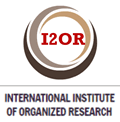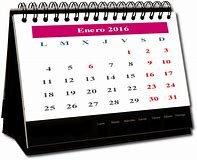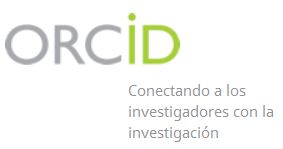Implantation of catgut in the treatment of chronic cervical radiculopathy
Keywords:
radiculopathy, neck pain, catgutAbstract
Introduction: chronic cervical radiculopathy is a disease that affects the life quality of patient. Objective: to evaluate the therapeutic response of catgut implantation in the treatment of chronic cervical radiculopathy. Method: a quasi-experimental, longitudinal and prospective study was realized in 86 patients affected by chronic cervical radiculopathy at “Comandante Manuel Fajardo Rivero” Hospital between October 2010 and December 2013. Patients were divided into two groups, one of study and other of control; the first received as treatment the catgut implantation and the second with drugs. Theoretical methods were used: analysis-synthesis, deduction-induction, hypothetical-deductive and historical-logical; empirical methods: observation, measurement, experimentation and interview and descriptive statistical methods for the interpretation of the results. Results: it was found that the usefulness of catgut treatment prevailed in the study group and behaved the same in each of the variants that marked Bi syndrome. Conclusions: The therapeutic response to catgut implantation is satisfactory in the treatment of chronic cervical radiculopathy.Downloads
References
1. Levin K. Cervical radiculopathies. En: Katirji M, Kaminski H, Preston D, editores. Neuromuscular disorders in clinical practice. Boston: Butterworth Heinemann; 2009. p. 836.
2. Álvarez Cambras R. Tratado de Cirugía Ortopédica y Traumatología. La Habana: Ciencias Médicas; 2011; T II.
3. González Díaz R. Patología degenerativa cervical: fisiopatología, diagnóstico y enfoque terapéutico. Tema monográfico patologías del raquis. Madrid: Drug Farma; 2008.
4. Comuñas F. Dolor radicular. Rev Soc Esp Dolor [Internet]. 2010 [citado 12 Oct 2013];7(Supl 2):36-48. Disponible en: http://revista.sedolor.es/pdf/2000_10_07.pdf
5. Pineda Folgoso L, Toledo Fernández AM, Ramírez Santiesteban RI. Afecciones osteomioarticulares. En: Álvarez Sintes R. Temas de medicina general integral. La Habana: Ciencias Médicas; 2008; V 3. p. 183-188.
6. Díaz Mastellari M. Medicina interna de la Medicina Tradicional China. Síndrome Bi. La Habana: Capitán San Luis; 2002; Cap 25. p. 318-329.
7. Shanghai College of Traditional Medicine. Implantación de hilos de sutura. En: Acupuntura: Un texto comprensible. São Paulo: Roca; 1996. p. 430-50.
8. Álvarez Díaz TA. Lecciones de medicina tradicional china. Parte II. Reglas para las medidas. Canales y colaterales. Puntos de acupuntura. La Habana: Capitán San Luis; 1993; Cap 9. p. 81-89.
9. Wang K, Liu HF, Zhou WH. Effects of catgut embedding at "Zusanli" (ST36) and "Shenshu" (BL23) on morphine analgesic tolerance and locomotor sensitization in the rat. Chinese Acupuncture Moxibustion. 2008 Jul; 28(7):509-13.
10. Wang SM, Kain ZN, White P. Acupuncture analgesia: I. The scientific basis. Anesth Analg. 2008 Feb; 106(2):602-10.
11. Wang SM, Kain ZN, White P. Acupuncture analgesia: II. Clinical considerations. Anesth Analg. 2008 Feb; 106(2):611-21.
12. Pérez Álvarez V, Pagola Bérger V, Depestre Pérez B. La analgesia quirúrgica acupuntural en la cirugía oftálmica. Medicentro [Internet]. 2005 [citado 21 Abr 2015];9(4 Supl 1):[aprox.3 p.]. Disponible en: http://www.medicentro.sld.cu/index.php/medicentro/article/viewFile/1071/1080
13. Pagola Bérger V, Herrera Rodríguez ME. La analgesia postoperatoria mediante implantación prequirúrgica de hilos de sutura absorbibles. Medicentro [Internet]. 2011 [citado 21 Abr 2015];15(1):66-68. Disponible en: http://www.medicentro.sld.cu/index.php/medicentro/article/viewFile/79/108
14. Uchitel OD. Transmisión sináptica. En: Tresguerres JAF. Fisiología humana. 2da ed. Madrid: McGraw-Hill Interamericana; 1999. p. 48-71.
15. Belmonte C, Cerveró F. Sistema sensorial. En: Tresguerres JAF. Fisiología humana. 2da ed. Madrid: McGraw-Hill Interamericana; 1999. p. 72-104.
16. Leung A, Khadivi B, Duann JR, Cho ZH, Yaksh T. The effect of Ting point (tendinomusculares meridians) electro acupuncture on thermal pain: a model for studying the neuronal mechanism of acupuncture analgesia. J Altern Complement Med. 2005 Aug; 11(4):653-61.
17. Pagola Bérger V. El dolor según la medicina occidental. En: Analgesia Quirúrgica Acupuntural. México: Herbal, 2005. p. 24-32.
18. Ma SX. Neurobiology of acupuncture: Toward CAM. Evid Based Complement Alternat Med. 2004 Jun 1;1(1):41-47.
19. Pagola Bérger VV, Herrera Rodríguez ME. La Analgesia Acupuntural para la realización de intervención quirúrgica: dos técnicas a favor de la Medicina Integrativa. Oeiras: Instituto Van Nghi; Portugal; 2015.
20. García Díaz MA. Implantación de catgut en el tratamiento de la hipertensión esencial no controlada [tesis]. Santa Clara: Universidad de Ciencias Médicas; 2011.
21. Santana Pozo JC. Implantación de catgut en el tratamiento de la ulcera duodenal según diagnóstico tradicional [tesis]. Santa Clara: Universidad de Ciencias Médicas; 2011.
22. Leiva Laffita N. Implantación de catgut en tratamiento del mioma uterino sintomático [tesis]. Santa Clara: Universidad de Ciencias Médicas; 2012.
23. Shanghai College of Traditional Medicine. Implantación de hilos de sutura. En: Acupuntura: Un texto comprensible. São Paulo: Roca; 1996. p. 430-50.
24. Díaz Mastellari M. Fundamentos filosóficos y gnoseológicos de la Medicina Tradicional China. En: Pensar en chino. Cancún: Pro-Art, 1997. p. 1-211.
25. Ping L. Diagnóstico de los Zang Fu. En: El gran libro de la Medicina China. Barcelona: Martínez Roca; 2000. p. 215-344.
26. Padilla Corral JL. Fisiopatología y tratamiento en medicina tradicional china [Internet] Madrid: Miraguano; 1998. [citado 12 Oct 2013]. Disponible en: http://www.zhongyi.org/news/teamnews.php?quina=22&cat=news
27. Jaramillo Giraldo JF, Ming M. Fundamentos de Medicina Tradicional China. Bogotá, 1988.
How to Cite
Issue
Section
License
Authors who have publications with this journal agree to the following terms:
- Authors will retain their copyright and assign to the journal the right of first publication of their work, which will simultaneously be subject to a Creative Commons License / Attribution-Noncommercial 4.0 International (CC BY-NC 4.0) that allows third parties to share the work as long as its author and first publication in this journal are indicated.
- Authors may adopt other non-exclusive license agreements for distribution of the published version of the work (e.g., depositing it in an institutional repository or publishing it in a monographic volume) as long as the initial publication in this journal is indicated.
- Authors are allowed and encouraged to disseminate their work through the Internet (e.g., in institutional telematic archives or on their web page) before and during the submission process, which can produce interesting exchanges and increase citations of the published work. (See The effect of open access).





 december 15 2025
december 15 2025


